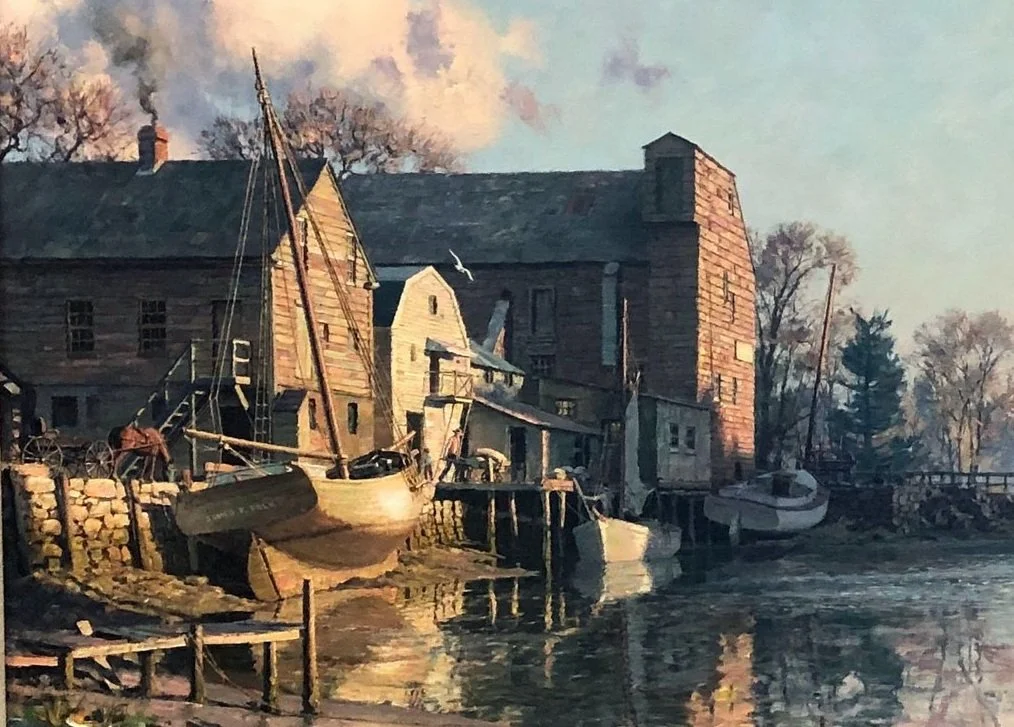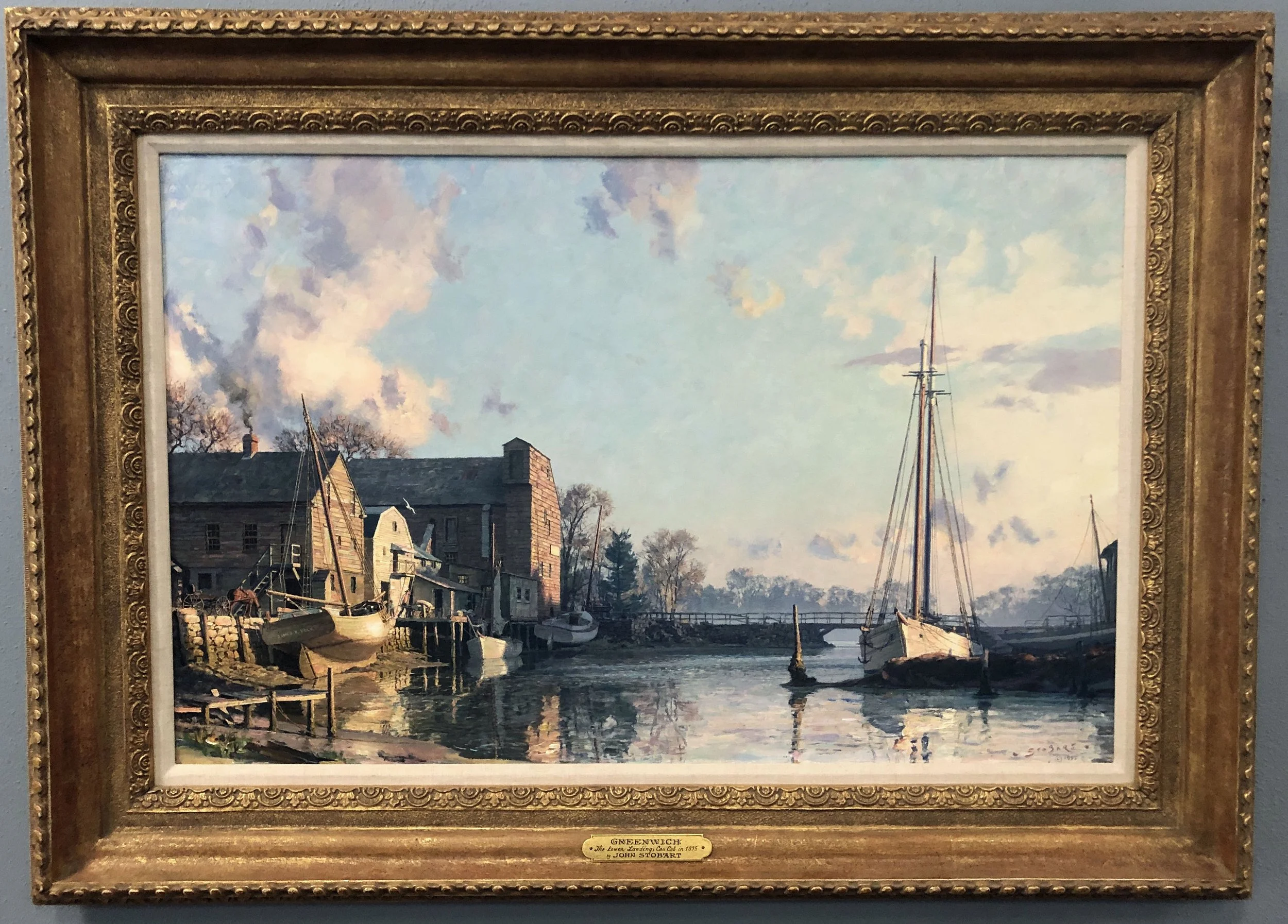Greenwich, The Lower Landing, Cos Cob, 1895
oil on canvas, 22” x 34"
$150,000
There is no question that John Stobart will be celebrated as the most influential marine artist of modern times. His ability to re-create both large and small 19th century ports is simply unparalleled. Regardless of the subject he tackled, his paintings were able to capture both the overall atmosphere and the intimate details of sweeping and complex scenes.
Greenwich, Connecticut is now one of the most prestigious bedroom communities of New York City. At the turn of the century, it was a farming community supplying produce to the markets of New York. At that time all cargoes shipped in coastal sloops from landings like this one in Cos Cob along the Mianus River, running up and down both sides of Long Island Sound. The principle crop originally was potatoes, though later, after more land had been well cleared, the variety of crops widened to include hay and grain, poultry, butter, cattle, sheep and hogs.
This painting depicts a quiet vision of the past, that, while not important in any big historical picture, returns a sense of the integrity and beauty of the community that once lived there. Today, this locale has become nearly invisible due to building for modern transportation. Four concrete pylons that support ‘I-95’ cross this view. Stobart was drawn to the scene by an old etching that included the odd-shaped grist mill with a lone doorway at the river’s end of its roof. From this, the world of the lower landing at Cos Cob in 1895 comes to life today. The beauty of the golden morning light, still low in the sky, conveys Stobart’s love of revealing the beauty of unpretentious settings. Every object, regardless of its importance, is given careful attention. Like the sun’s warmth, Stobart’s enjoyment of recreating a world from such small relics of the past pervades every corner of the composition. The small bridge visible in the painting is still in use today.
It’s custom gold leaf frame measures 31” x 43.”




